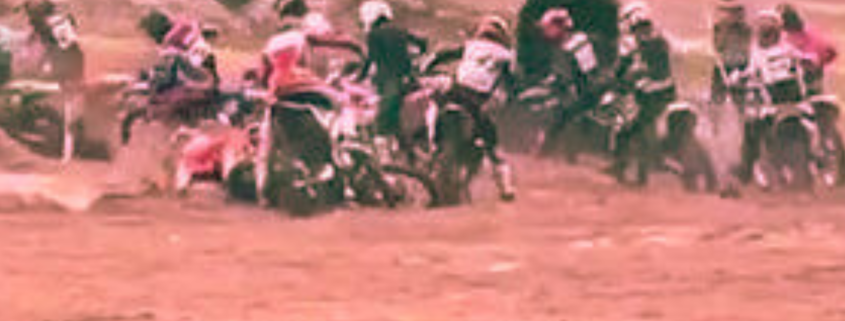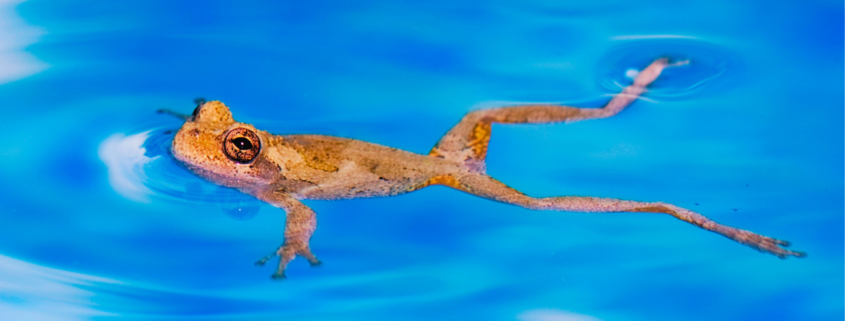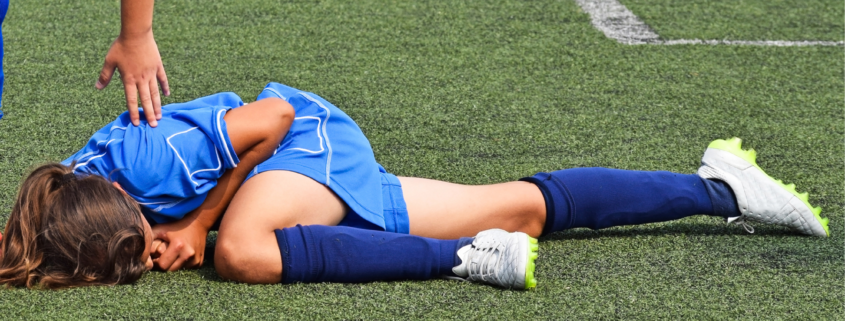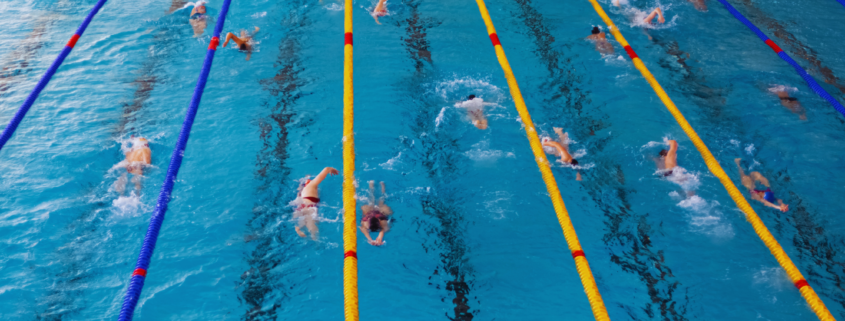Supercross, Super Injured
As the 2023 Monster Energy AMX Supercross season unfolded it become increasingly apparent that it was going to be a season remembered for its shocking injury toll. I will specifically focus on the 450cc class, to keep the article as brief as possible. The 250cc class injury list was equal in length to the 450cc class.
Here’s he injured list as of 2 May 2023. These riders missed one or more rounds or failed to complete a round in the 2023 season due to injury sustained in racing or practice:[1]
450SX
- Eli Tomac – Achilles
- Colt Nichols – Unknown?
- Jason Anderson – Neck
- Cooper Webb – Concussion
- Justin Barcia – Collar Bone
- Benny Bloss – Collar Bone
- Grant Harlan – Shoulder
- Christian Craig – Hip, Elbow
- Dylan Ferrandis – Concussion
- Brandon Hartranft – Back, Shoulder, Hip, & More
- Scott Meshey – Leg
- Marvin Musquin – Wrist
- Bubba Pauli – Thumb
- Aaron Plessinger – Hip
- Alex Ray – Finger
- Justin Rodbell – Achilles Tendon
- Malcolm Stewart – Knee
The author of this list acknowledged they may have missed a few injuries because the injury list was so long. They have missed at least:
- Adam Cianciarulo – Concussion [2]
- Kyle Chisolm – Knee [3]
- Christian Craig – Hip and elbow [4]
- Joey Savatgy – Wrist [5]
And in the week following the compilation of this list add the following:
- Ken Roczen – Knee [6]
In the seventeenth and final round of the season in the 450cc class, 4 of the top 10 riders on points were not available due to injury. That’s 40% of the top 10 points leaders. And if you add Ken Roczen who didn’t complete the final round, that 50%.
But even that stat is misleading on the upside, as it only includes those riders healthy enough to be in the top 10 points leaders by the last round.
If we look at the riders who started the season, it’s worse. Using the 20 riders listed on the official series web site,[7] only the following three (3) riders may have avoided missing 2023 rounds due to injury.
- Justin Hill
- Shane McElrath
- Dean Wilson
Assuming the 20 riders featured were the top 20 riders for 2023, this means 85% (17 of 20) of the 2023 Monster Energy AMA Supercross top 20 lost rounds or their season due to injury. 85%. That’s a huge number, even for a high risk sport. I have not seen or made any comparisons to prior seasons; however I suggest it is a PB – for the wrong reasons.
Many were surprised and shocked, including the riders, and industry experts.
The final stretch in one of the most exciting years of the Monster Energy Supercross Championship is playing out much differently than we had expected … several contenders in the 450 Class are now sidelined with injuries. [8]
These injuries have brought out the armchair experts, submitting their theories as to the cause.
Firstly, you did not need to surprised and shocked. At least not if you had read my blog article on this very topic, warning of the impending injury impact and the reasons why.
Secondly, while everyone is entitled to their opinion, most have no ‘skin in the game’. What if their hypothesis as to the cause of the rise in injury incidence is wrong? There is no price to pay. However, someone in every racer’s team is or should be accountable for ensuring the riders enjoys an injury free career, and it’s obvious they are failing their rider. Now this is not uncharacteristic in sport as very few athletes enjoy an injury free career for the same reason. I will share my vision for the athlete in this regard.
Thirdly I share another principle I have developed – injuries are predictable and preventable. But only if you can accurately predict them. If an athlete I injured, either they have ignored their advisors warning or their advisor failed them.
And fourthly and finally, what are some key steps a racer can take to avoid the arrival on the injury curse’ in their sport.
I told you so
I was going to name this article this ‘I told you so’. But I felt the perception that I am a smart-arse might leave the messenger targeted and obscure the message. The message is that the rise in injuries in the sport of moto/super ross was and Is predictable, and unless changes are made it will continue as the new norm. It has in most sports for their systemic failure to understand the cause of injuries, and there is nothing about off-road motorbike racing that leads me to believe they will rise above other sports in the similar situation.
Anyway, coming back to my prediction. On 8 Sep 2021 I wrote blog article titled A Lament for the Late Arrivals, where I spoke specifically about the relatively recent embracement of sports including moto/super-cross and the tipping point that has been passed in the relatively recent embracement of messed up popular dryland training methods. The lament was for the price they would pay – specially injuries and performance decrement.
I wrote:
I feel for the late arrivals, and I lament the collateral damage they are potentially walking into…. The outcome is increased injuries and decreased performance. The exact opposite to the proclaimed benefits of ‘strength and conditioning’.. Ideally, I should be saving I hope your non-specific (physical preparation) training helps you thrive. That would be nice. However, based on my experience and observations – what I know – if you do what the rest of your colleagues are doing in their interpretation of the best way to train, survive may be a more appropriate term.
The Monster Energy AMA Supercross class of 2023 walked into this collateral damage in this season.
I have a saying –
‘I take no delight in being right about my injury predictions.
I did tell you it was coming, but I don’t take any satisfaction from it. I said from the outset:
I feel for the late arrivals, and I lament the collateral damage they are potentially walking into….
Every athlete should be given the opportunity to fulfill their sporting potential, free from injury
I have been publishing this vision statement for many years now:
My vision is that every athlete should be given the opportunity to fulfill their sporting potential, free from injury.
For two reasons – firstly, performance and career results are inversely related to injury incidence and severity. The less injuries and or the less severe the injury, the higher the performance and career achievements.
I learnt this lesson unequivocally by the early 1990s and used this ‘zero-tolerance to injury’ approach to produce championship and podium outcomes in team and invidual sports.
The second reason I formed this vision was that it’s the right thing to do. Unlike the majority of coaches, I believe we can dominate in sport and provide optimal long-term health outcomes for the athlete concurrently. They are not mutually exclusive.
Other than the occasional regurgitation of my vision claimed by the usual authors unable to create original content, I don’t see many embrace my vision in the coaching decisions.
Which I why I expressed the following in my blog article titled A Lament for the Late Arrivals:
You deserve better. Our profession has failed to deliver safe training, let alone optimal training. Now it’s up to you to be more discerning. Don’t assume. Don’t imitate. Seek answers, dig deeper, objectively question and interpret the cause-effect relationship of what you are seeing and doing. Be more scientific in your review than our profession is.
Your future depends on it.
And not just your sporting future.
Injuries are predictable and preventable.
It appears that everyone has an opinion as to the cause of this injury rise in moto/super cross. And they are entitled to their opinion. What if their hypothesis as to the cause of the rise in injury incidence is wrong? You can’t prevent an injury if your hypothesis as to the cause is off track.
The most common ‘fail’ in injury explanation include:
- It was a freak accident.
- It’s just part of the sport.
This is a complete abdication of responsibility and ability to take control and prevent injuries.
Which is why I was shattered when I listened to and re-read Eli Tomac’s explanation for his season ending and championship denying Achilles tendon rupture in the 2023 season:
Basically at a loss for words right now over what happened and how it happened,” he said. “In my mind, it was just a freak deal and a racing situation, you know. I look back, I barely over jumped that tabletop and was just standing up into that ramp and I guess the high g load took a little too much for my Achilles there? I don’t know. I honestly just put it as a freak deal. I’ve over jumped into plenty of other jumps just as hard, if not harder, and have been totally fine before. I guess this stuff happens with racing.”[9]
You might notice some key words that I referred to above, including:
- It was just a freak deal… I honestly just put it as a freak deal.
- …a racing situation… I guess this stuff happens with racing.
- … I don’t know.
I am not surprised he didn’t know what was going on with his Achilles before it tore off the bone. It would have taken a highly competent member in his support team to have provided this information. However, to not understand it better in retrospect – leaves a lesson not taken, and the probability of repeat injury.
He is a great athlete and dominating his class. This is the beauty of human performance. Even the best can be better. And one avenue available to Eli to advance would be to adopt a value-set towards injury more aligned with the philosophy described as the Serenity Prayer:[10]
God, grant me the serenity to accept the things I cannot change,
the courage to change the things I can,
and the wisdom to know the difference.[11]
I formed this saying many years ago –
Injuries are predictable and preventable.
However, if a coach lacks the ability to accurately and consistently predict an injury in advance – yes, in advance – then they have no chance of contributing to preventing them.
Let’s use Eli Tomac’s 2023 Achilles tendon rupture as an example.
It’s incredibly unlikely that there were no signs or messages that Eli’s Achilles was in trouble, and about to snap. Appropriate injury prevention screening would have picked this up.
If an athlete is injured, either the athlete has ignored their advisors warning – and that’s rare because why would they hire them only to ignore them? – or their advisor failed them.
Some key steps a racer can take to avoid the arrival on ‘the injury curse’ in their sport
It’s not good enough to be critical without providing at some solutions, so this section touches upon a few key, simple recommendations in the area of dryland training that will contribute to avoiding the collateral damage of mainstream training.
But before we go there let me clarity – my reference to ‘the injury curse’ was facetious. It’s the default go-to used by sports and coaches that want to abdicate their injuries to a source other than one within their control.
I have not seen it used in moto/super cross yet, but that’s only a matter of time…
Here are three simple considerations for racers to avoid injury, including crashed caused by training induced physical imbalances.
- Tissue length and tension.
I’ve been championing stretching and tissue manipulation for injury prevention, rehab and optical performance for decades. Then along came the abolition of stretching. I liken the attempts to scare individuals to avoid stretching to the many periods in history when reading or specific books were banned. I suggest stretching has been pillared for the same reasons – because those who drive this paradigm stand to lose out (commercially) in the event you discover the benefits of stretching. Don’t became a victim to this. Stretch. Including static stretching.
As for tissue manipulation, the popularization of foam rollers is by the same interest attempting to ban stretching. Despite the economic gain for others of selling you a foam roller, the roller is innate. It can’t interpret your tension and adapt its work to address this. Whilst I do not suggest throwing out (or burring) your form roller, keep in mind it is just one of many modalities available to you to lower and monitor your tension levels. I suggest including some input from a competent human being e.g massage therapist or similar health professional with good hands and a sharp understanding of optimal tension.
Tip: If you spend more time on your bike than you do lengthening and softening your connective tissue, you will become an injury statistic.
- Reverse the damage of your sport before you seek to replicate it.
It shatters me to see athletes, including now off-road racers, performing ‘sport specific’ dryland training, especially strength training. A key principle I have developed and teach is that the primary goal of strength training in the first instance is to reverse any inappropriate adaptations that occur your specific sport. Let’s take the landing from jumps.. Let’s imagine that the calf and Achilles tendon increase in their tension and reduce in their length over time due to repetition of absorbing the G-forces in landing. Let[s pretend that if you don’t reverse this adaptation they become shorter, and weaker, dysfunction and inhibited, and finally experience a tear or worse a complete rupture. Actually we don’t need to ‘pretend’. That’s what happens and Tomac’s 2023 injury is a classic example of potentially failing to prioritize this ‘reversal’ work in dryland training.
Tip: Yes, you can do so-called ‘performance enhancement training’ by doing so-called sport-specific training – however if this is contributing to performance decrement because it is making the sport specific adaptations worse, you are creating performance decrement. On the other hand, if you enhance your muscle function by reducing negative sport specific adaptations through injury prevention/rehab training, you are going to enhance your performance. Sounds counter-intuitive but that’s my perspective.
- Challenge every adaptation.
All training results in an adaptation. Is this adaptation truly serving you as a racer? I divide training into two simple categories – specific and non-specific. The only specific training is playing your sport, so that means when you are on the bike. All other training, no matter how much lip-service any gives that it is ‘sport specific’, it is not. It will give you specific adaptations. The only question is whether those specific adaptations will transfer to your riding.
Many athletes get a warm feeling from the muscle mass and strength increases from strength training. In part because of the social rewards placed on ‘getting buffed’, and in part because it gives them a feeling of being a warrior. There is no correlation between muscle mass and or non-specific (gym) strength that trumps optimal technical and tactical development. More likely, you will see a decline in technique if your dryland adaptations contest skill execution e.g., if you develop leg imbalances in the gym, which most do even if they are trying not to, you will load inapproachably over jumps and increase crash frequency. Just one of many examples.
Tip: Critically analyze, and in a futures sense, the adaptations your dryland training is and will give you, and question it’s transfer. If you a getting big and strong because of low-self-esteem, read a self-help book. And remember this – most of the current crop of riders leant to ride well before adding dryland training, after which they will experience a higher frequency of crashes and related injuries (because of the imbalances ij their dryland training).
Conclusion
I did intend to keep this article brief, however as I wrote my empathy for the athlete, in this case the racer, took over, and I sought to give a bigger lifeline. (Lucky we restricted the focus to 450cc class injuries, and only over the one season!)
I don’t take any joy in saying ‘I told you so’, but it was quite ironic that what I wrote about 2021 came to be manifested within two years.
There are ways to train that can reduce a racers crashes and subsequent injuries, however it will take a fresh look at the options. Simply following the herd will not avoid this rising phenomenon of injuries that will be blamed on anything and everything other than the actual cause.
As an athlete you are not expected to solve all the problems and challenges of a long, injury free career by yourself. However, as an individual sport athlete the onus is on you to ask the right questions, and to appoint guides who have the best answers. That is you burden. Those appointments can make or break your career.
And if injuries do occur take the lesson. Avoid writing it off as a ‘freak accident’ or ‘that’s what happens in racing’. The injuries will occur in conjunction with a crash so don’t rush to assume the injury was caused by the crash. The injury might have caused the crash. In the same way an equipment setup can cause crashes (e.g., inappropriate sag setting or similar placing too much weight on the front tyre and front washouts occurring more frequently), inappropriate body set up (e.g., imbalances in your musculoskeletal system) can cause crashes. If you don’t fully understand what causes crashes, you may never unlock the code of body-bike relationship and miss an opportunity to ‘tune’ the body in the same way your suspension mechanic tunes your bike to avoid you crashing.
Your physical coaches KPI (Key Performance Indicator) should be a reduction in crashes and injuries ahead of an increase in non-specific performance (VO2 max or load displaced in the gym or the size and strength of your muscles).
In my five decades of helping athletes fulfill their potential in a wide range of sports and in diverse countries through a double-digit number of Olympic cycles. I have seen that despite the challenges faced by athlete due to adopting misguided but dominant paradigm-based training programs, many athletes seem to want to cling onto the ego attachments of their choices. Others want to conform.
My hope is that you can do what the truly best I the world athletes do. Feel no desire to be like everyone else and find a way to train in a way that is best for you. This will need you to be willing to be different, and to make your own mind up. This alone will reduce your numbers of competitors. That’s the way of top performance. There are a few at the top so far ahead of the rest. There is a reason they are there, and you need to scratch below the perceptions to understand what sets them apart. Look beyond your sport for the best clues.
References
[1] https://www.vitalmx.com/forums/moto-related/current-2023-injury-list
[2] https://motorsports.nbcsports.com/2023/04/26/adam-cianciarulo-aaron-plessinger-detail-injuries/
[3] https://www.fullnoise.com.au/fullnoise-news/the-emergency-department-2023-ama-supercross-championship-round-7-arlington/
[4] https://motorsports.nbcsports.com/2023/04/10/christian-craig-timetable-for-return-uncertain-after-glendal-injuries/
[5] https://www.vurbmoto.com/joey-savatgy-injury-update-2/
[6] https://mxvice.com/injury-update-ken-roczen-10/
[7] https://www.supercrosslive.com/riders/450
[8] https://www.swapmotolive.com/2023-supercross-late-season-injury-updates-championship-changes/features/kickstart/
[9] https://www.vurbmoto.com/eli-tomac-on-future-after-achilles-injury-in-denver/
[10] https://en.wikipedia.org/wiki/Serenity_Prayer#:~:text=It%20is%20commonly%20quoted%20as,wisdom%20to%20know%20the%20difference.
[11] https://uscatholic.org/news_item/commentary-how-i-discovered-i-was-wrong-about-the-origin-of-the-serenity-prayer/







